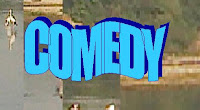Essence of Comedy: From Merrymaking to Theatrical Delight
Essence of Comic Pleasure: Diverse Elements, Cultural Variances, and Stimulus Theories
From Hobbes' Perception of Superiority to Jonson's Theory of Humors
Essence of Comedy Through Crafty Slaves, Foolish Masters, Love-Struck Teenagers, and Mischievous Coincidences
Examining Physical Appearance, Language Misuse, and Sudden Situations as Sources of Laughter
A history of English literature : Buchan, John, 1875-1940 : Free Download, Borrow, and Streaming : Internet Archive. (n.d.). Internet Archive. https://archive.org/details/historyofenglish00buch
Full text of “A History Of English Literature Vol. 3 Ed.1st.” (n.d.). Full Text of “a History of English Literature Vol. 3 Ed.1st.” https://archive.org/stream/in.ernet.dli.2015.100288/2015.100288.A-History-Of-English-Literature-Vol-3--Ed1st_djvu.txt
An outline history of English literature : Hudson, William Henry, 1862-1918 : Free Download, Borrow, and Streaming : Internet Archive. (n.d.). Internet Archive. https://archive.org/details/outlinehistoryof00hudsuoft
A history of English literature : Compton-Rickett, Arthur, 1869-1937 : Free Download, Borrow, and Streaming : Internet Archive. (n.d.). Internet Archive. https://archive.org/details/historyofenglish00comprich
A short history of English literature : Saintsbury, George, 1845-1933 : Free Download, Borrow, and Streaming : Internet Archive. (n.d.). Internet Archive. https://archive.org/details/shorthistoryofen00sain
ALBERT. (2000). History of English Literature (Fifth Edition) [English]. OXFORD UNIVERSITY PRESS.


Comments
Post a Comment
Drop any query, suggestion or comment here.